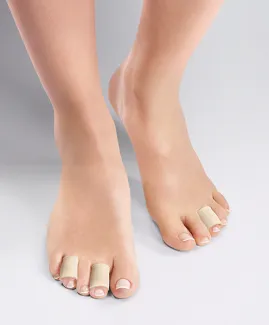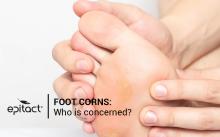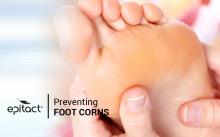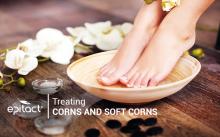
Corns on foot
Toe protectors for painful foot corns and soft corns on toes.

Free Shipping 
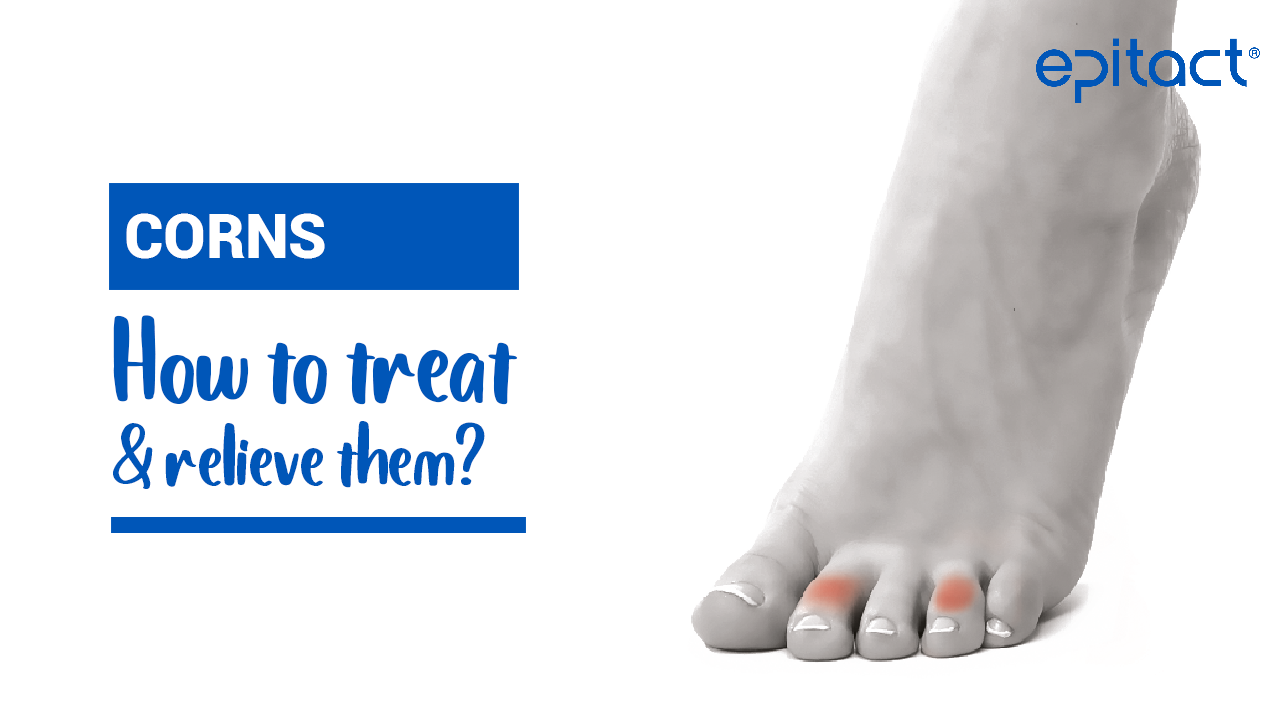
Definition of a corn on foot
When the toes are deformed or tighten in the shoes, they are subjected to excessive pressure. This painful contact leads to the formation of localised areas of thick and hard dead skin called foot or toe corns.
There are two types of foot corns:
- hard corns are located on the toes, at their end or under the ball of the foot;
- soft corns sit between two toes, often between the fourth and fifth toes.
What are the symptoms and causes of hard and soft corns?
A corn on the foot is caused by excessive and repetitive pressure and rubbing of the skin, usually against the shoes. Corns are so a protective reaction of the skin, which defends itself against such stresses. Foot corns are very painful, as their black cone-shaped core penetrates the deep layers of the skin. As a consequence, they can cause a lot of discomfort and difficulties walking.
Hard and soft corns look different. Hard corns on toes are very firm and dry, and appear over the area of greatest friction or pressure, usually a joint.
Soft corns have a white colour and are often surrounded by red, which is a sign of inflammation. Soft corns are spongy due to their exposure to humidity and maceration between toes.
What are the treatments for a corn on the toes?
Treating a corn first consists of simply removing the source of the friction or pressure responsible for their development. Wearing appropriate shoes, not too tight to avoid pressure, not too large to prevent friction as well as using corn on toe protectors can help.
If this do not work, other main treatments for corns exist. If you have an underlying foot deformity (e.g.: hammer toes, hallux valgus) and recurrent corns, your doctor can prescribe you orthopaedic insoles. See a podiatrist who can remove your foot corn thanks to special tools.
Prevent and relieve a corn on the foot with the EPITACT® toe protectors
EPITACT® has created toe protectors made of soft fabric and patented silicone gel that distribute pressure and absorbs friction very well. They are ultra-thin and comfortable so you can wear them in all types of shoes to soothe corns on toes!
The Digitops* have been designed to protect and relieve the end of the toes.
The DIGITUBES® protections* wrap the toe to relieve and get rid of corns on or between toes.
The hammer toe cushions* help to unfold the bending toes (hammer, claw or mallet toes) and then limits pressure on them.
*These solutions are class I medical devices that bear the CE marking under this regulation. Carefully read the instructions before use.
Manufacturer: Millet Innovation. 05/2023
You should not sand the dead skin or apply a keratolytic ointment yourself to remove a foot corn.
FALSE! By sanding the corn on your foot yourself, you are likely to remove too much skin, what favour the protective skin reaction. Result: the corn will come back very quickly. As for keratolytic balms or ointments, they act chemically on the corn to make it disappear but do not attack the cause: the excessive pressure. To permanently prevent the formation of corns on toes, use a toe protector to cushion pressure in the shoe. See a GP to receive an appropriate treatment for your corn on foot.
A corn can only form on the toes.
FALSE! A corn is caused by excessive pressure, either related to the shoe or to the foot if it does not hit the ground properly. It is due to foot deformities that can cause imbalance in the distribution of loads. So, while walking, some small areas under the forefoot must support disproportionate pressure. As a consequence, a plantar corn may form. (Do not confuse a foot corn with a callus!)
There is only one type of corn on the foot.
FALSE! There are several types of foot corns. For example, there is the simple corn, the vascular corn or neurovascular corn. Each of them leads to specific pain. For example, vascular corns easily bleed while caring. To learn more about the different types of corns on toes and feet, click here.
 Pharmacie
Pharmacie